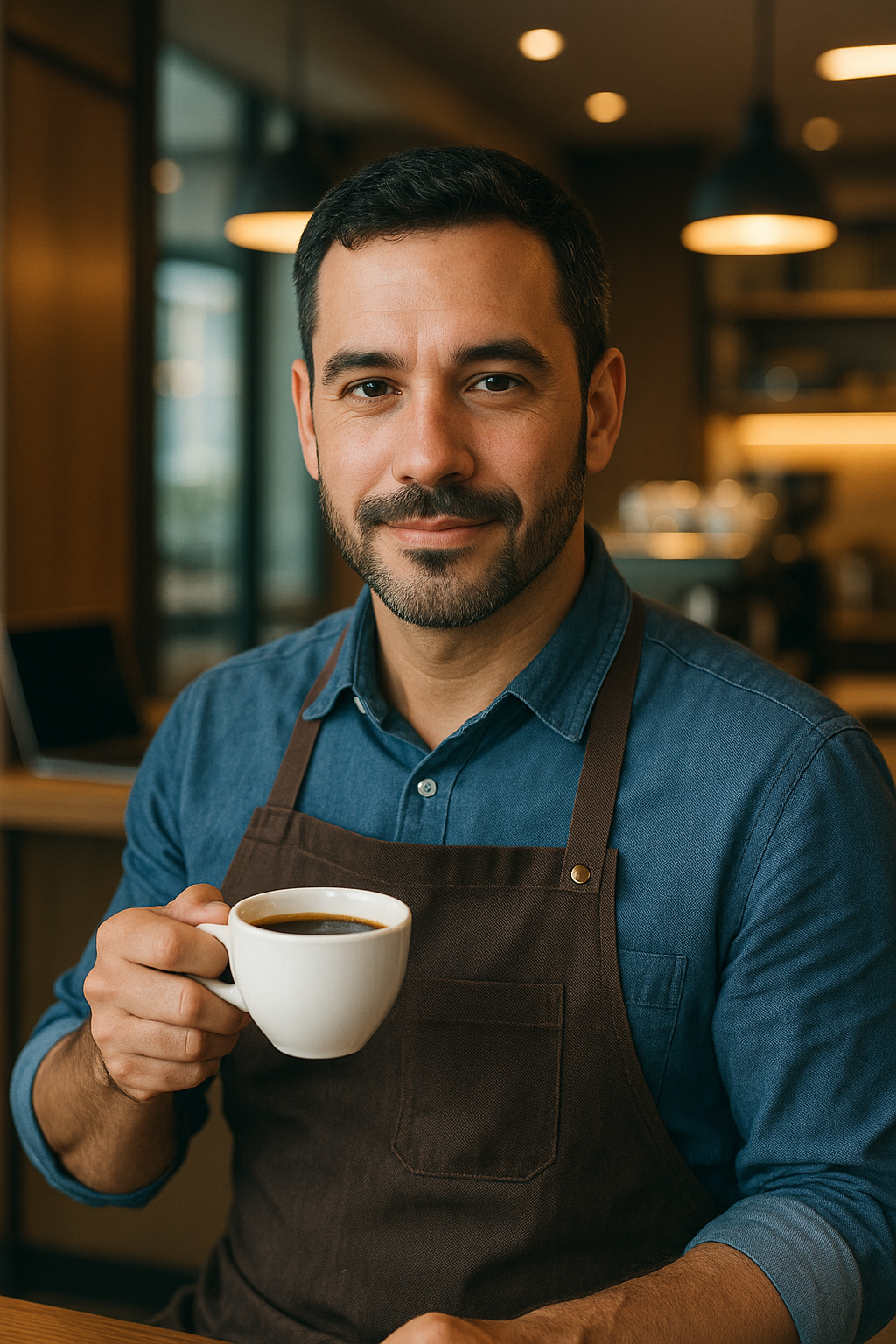Brewing exceptional coffee at home doesn’t require expensive equipment or barista training. With the right techniques, quality ingredients, and a bit of practice, anyone can create a café-quality cup in their kitchen.
This comprehensive guide is designed for beginners, covering every step of the coffee-making process—from choosing beans to mastering brewing methods. By following these tips, you’ll elevate your coffee game and impress your taste buds.
Why Brewing Great Coffee at Home Matters
Coffee is more than a morning ritual; it’s an experience. Brewing at home lets you control every aspect of the process, from flavor profiles to freshness. Plus, it’s cost-effective compared to daily café visits. A well-brewed cup can energize your day, enhance focus, and even spark creativity. This guide ensures you achieve that perfect balance of aroma, taste, and texture without guesswork.
Step 1: Choose High-Quality Coffee Beans
The foundation of great coffee is the bean. Quality beans deliver nuanced flavors, while low-grade ones result in flat, bitter brews.
Look for Freshly Roasted Beans
Always buy beans roasted within the last month. Freshness preserves the oils and compounds responsible for rich flavors. Check the roast date on the package, not just the expiration date. Local roasters or specialty coffee shops are great sources for fresh beans.
Understand Bean Types
There are two main types of coffee beans: Arabica and Robusta. Arabica offers a smoother, sweeter taste with complex notes, ideal for home brewing. Robusta is bolder and more bitter, often used in espresso blends. For beginners, start with Arabica for a balanced cup.
Experiment with Roast Levels
Roast levels—light, medium, and dark—affect flavor. Light roasts highlight the bean’s natural characteristics, like fruity or floral notes. Medium roasts balance acidity and body, while dark roasts deliver bold, smoky flavors. Try medium roasts for versatility in brewing methods.
Step 2: Store Beans Properly
Improper storage ruins coffee’s flavor. Oxygen, light, heat, and moisture are the enemies of fresh beans.
Use Airtight Containers
Store beans in an airtight, opaque container to block air and light. Glass or stainless steel canisters with tight seals work best. Avoid clear containers, as sunlight degrades flavor.
Keep Beans Cool
Store containers in a cool, dry place, like a pantry. Avoid the fridge or freezer, as moisture and odors can seep into the beans. Only buy what you’ll use in 2-3 weeks to maintain freshness.
Step 3: Grind Your Beans Fresh
Pre-ground coffee loses flavor quickly. Grinding beans just before brewing preserves their aroma and taste.
Choose the Right Grinder
Invest in a burr grinder for consistent particle size. Blade grinders create uneven grounds, leading to inconsistent extraction. Manual burr grinders are affordable for beginners, while electric ones save time.
Match Grind Size to Brewing Method
Grind size impacts flavor. Use a coarse grind for French press, medium for drip or pour-over, and fine for espresso. Adjust based on taste: if coffee is too bitter, try a coarser grind; if it’s weak, go finer.
Step 4: Use the Right Water
Water makes up 98% of your coffee, so its quality matters. Poor water can ruin even the best beans.
Filter Your Water
Use filtered or bottled water to remove impurities like chlorine. Tap water with strong odors or high mineral content can alter taste. Aim for water with a neutral pH for optimal extraction.
Heat to the Ideal Temperature
Water should be between 195°F and 205°F (90°C to 96°C) for brewing. Too hot, and the coffee becomes bitter; too cool, and it’s under-extracted. A gooseneck kettle with a thermometer is ideal for precise control.
Step 5: Master Your Brewing Method
The brewing method shapes the coffee’s flavor and texture. Here are three beginner-friendly options.
French Press: Bold and Full-Bodied
A French press is affordable and easy to use. Add coarse grounds and hot water, steep for 4 minutes, then press slowly. The result is a rich, robust cup. Tip: Stir gently after adding water for even extraction.
Pour-Over: Clean and Nuanced
Pour-over methods, like Chemex or V60, produce a clean, bright cup. Place medium grounds in a filter, pour hot water in a slow, circular motion, and let it drip. Control the pour speed to avoid over- or under-extraction.
Aeropress: Versatile and Quick
The Aeropress is compact and versatile, ideal for small spaces. Use fine grounds, add hot water, stir, and press through a filter after 30 seconds. It’s great for experimenting with brew times and strengths.
Step 6: Measure Accurately
Precision ensures consistency. Guessing ratios leads to weak or overpowering coffee.
Follow the Golden Ratio
A standard ratio is 1:15—1 gram of coffee to 15 grams of water. For a 12-ounce cup, use 20 grams of coffee and 300 grams of water. Adjust slightly based on taste preference.
Use a Scale
A digital scale is a game-changer. Weigh both coffee and water for accuracy. Measuring by volume (e.g., scoops) is less reliable due to varying bean densities.
Step 7: Time Your Brew
Brew time affects extraction. Too short, and the coffee is weak; too long, and it’s bitter.
Timing by Method
French press takes 4 minutes, pour-over 2-3 minutes, and Aeropress 30-60 seconds. Use a timer to stay consistent. Adjust slightly if the coffee tastes off—shorter for bitterness, longer for weakness.
Stir for Even Extraction
For methods like French press or Aeropress, stir gently after adding water. This ensures all grounds are evenly saturated, improving flavor.
Step 8: Taste and Adjust
Great coffee is personal. Taste each batch and tweak variables to suit your palate.
Identify Flavors
Take small sips to notice flavors like fruit, chocolate, or nuts. If the coffee is too sour, it’s under-extracted; increase brew time or use hotter water. If it’s bitter, reduce time or use cooler water.
Keep a Coffee Journal
Note your grind size, water temperature, brew time, and taste impressions. This helps you replicate successful brews and avoid mistakes.
Step 9: Clean Your Equipment
Residue from old coffee or oils can taint future brews. Clean equipment after every use.
Rinse Immediately
Rinse French press plungers, pour-over cones, and Aeropress parts with hot water. Use mild dish soap weekly to remove oils, but avoid harsh detergents that leave odors.
Descale Regularly
Hard water leaves mineral deposits in kettles or drip machines. Descale monthly with a vinegar-water solution or a commercial descaler to maintain performance.
Step 10: Experiment and Enjoy
Once you master the basics, coffee brewing becomes an art. Experiment with new beans, roasts, or methods to discover your perfect cup.
Try Single-Origin Beans
Single-origin beans showcase unique flavors from specific regions, like Ethiopian Yirgacheffe’s floral notes or Colombian Supremo’s nutty richness. Rotate beans monthly for variety.
Add Personal Touches
Enhance your coffee with spices like cinnamon or cardamom, or try a splash of oat milk for creaminess. Keep additions subtle to let the coffee shine.
Common Mistakes to Avoid
Beginners often make small errors that impact quality. Here are pitfalls to watch for:
- Using Stale Beans: Always check roast dates and store properly.
- Inconsistent Grinds: Invest in a burr grinder for uniformity.
- Wrong Water Temperature: Use a thermometer to stay in the 195°F-205°F range.
- Skipping Measurements: Weigh coffee and water for consistency.
- Neglecting Cleaning: Rinse equipment after every use to prevent residue buildup.
Why This Guide Works for You
This step-by-step approach simplifies coffee brewing without sacrificing quality. Each tip is practical, backed by coffee science, and tailored for home brewers. By following these steps, you’ll create delicious coffee while building skills to experiment confidently. Plus, the focus on fresh ingredients and precise techniques ensures every cup is a treat.
Take Your Coffee to the Next Level
Brewing great coffee at home is rewarding and fun. Start with quality beans, invest in a few tools like a burr grinder and scale, and practice one brewing method at a time. Over weeks, you’ll notice your coffee improving dramatically. Share your creations with friends or family to make the experience even more special.

Marcelo Oliveira is a coffee enthusiast and content creator specializing in barista skills, brewing methods, equipment reviews, coffee-related health insights, and fascinating curiosities from the coffee world. With a deep passion for every step of the brewing process, he turns technical knowledge into accessible and engaging content for both beginners and seasoned coffee lovers. Marcelo’s goal is to help readers appreciate the full experience of coffee—from bean to cup.
